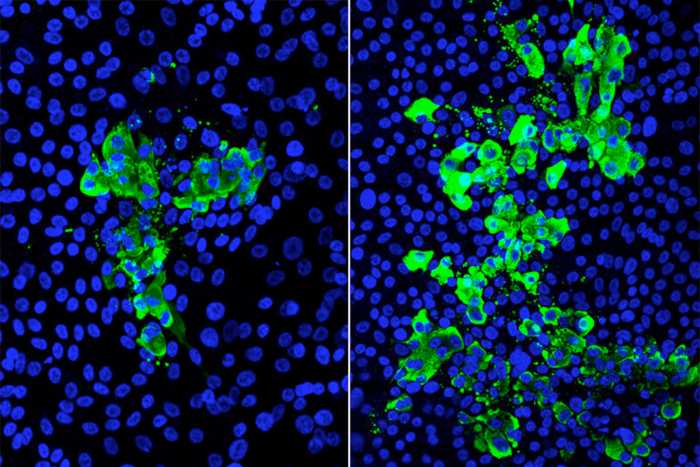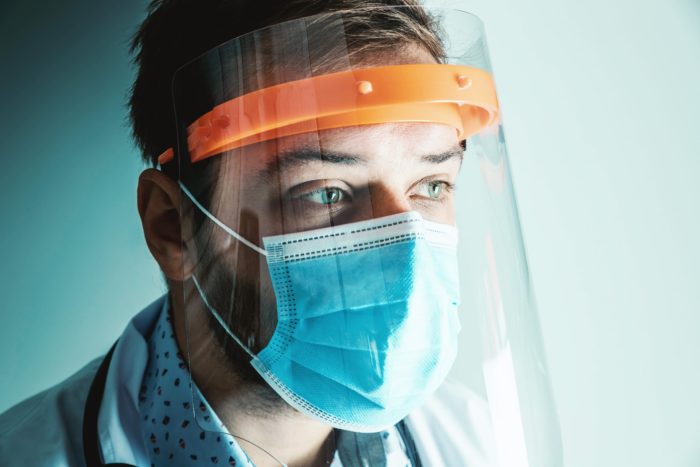American biologists from the University of California, Los Angeles, have analyzed the molecular mechanisms associated with the risk of developing more severe covid-19 form in smokers. The results were published in the scientific journal Cell Stem Cell.

These are micrographs of airway tissue models containing cells infected with SARS-CoV-2 (which are green). As we see in the photo, the tissue treated with cigarette smoke on the right had 2-3 times more infected cells than the non-smoking tissue on the left.
By means of a cell model, California Institute for Regenerative Medicine experts recreated the processes taking place in the respiratory tract of a smoker infected with covid-19. The upper part of the respiratory tract is the first area the virus gets to. This is where mucus is produced to trap viruses, bacteria and toxins. This area is full of tiny fingers pushing the mucus up and out, says Brigitte Gomperts, Professor of Pulmonary Medicine.
She also explained how the process worked. First, stem cells were taken from five non-smokers’ lungs. Then, these cells were treated with cigarette smoke 3 minutes a day imitating the smoking process.
Such cell models have been used for lung diseases research for over 10 years and are proven to imitate the changes in the respiratory tract of a smoker.

Later, these cells were infected with SARS-CoV-2, so that the researchers could compare the control cells and the „smoking“ ones.
As a result, those cell models treated with smoke suffered more severely from coronavirus. The scientists found 2-3 times more infected cells there.
The researchers came to the conclusion that a more severe development of the disease in smokers is due to the blocked activity of interferons, the signalling proteins responding to the presence of viruses and increasing the cells’ anti-viral defences. Moreover, interferons inform other cells about the presence of the pathogens in the body.
Professor Gomperts compares the human respiratory tract with high walls protecting a castle, while smoking would be making holes in these walls. It reduces the natural defence and lets the virus get inside.
The researchers hope that these results could help develop therapeutic strategies for treatment and lowering the risk of developing more severe covid-19 illness in smokers.

By the way, this July, the American biologists already found that those smoking cigarettes are more prone to coronavirus compared to those using e-cigarettes.
The research also showed that both kinds of smoking cause lung inflammation, but tobacco intake also leads to an increase in the number of ACE2 receptors on the lung cells surface. ACE2 means Angiotensin-converting enzyme 2, which are entry points into cells for some coronaviruses.
This or that way, the best choice is not to smoke.










